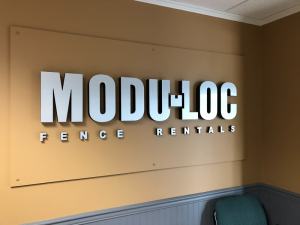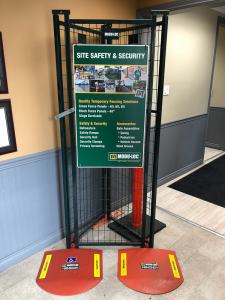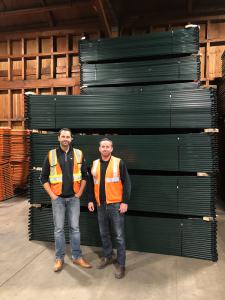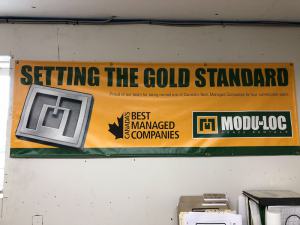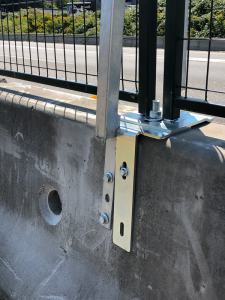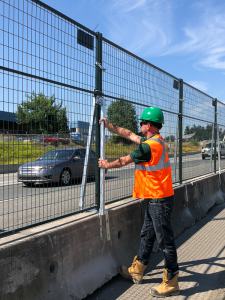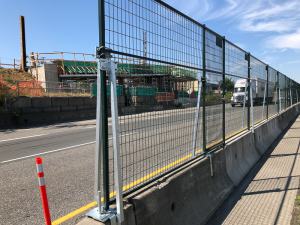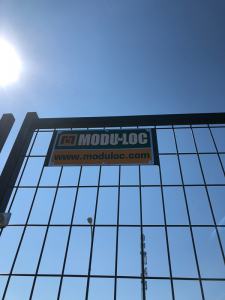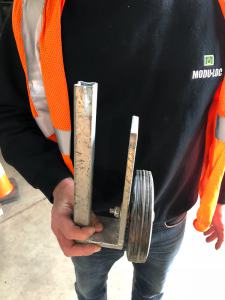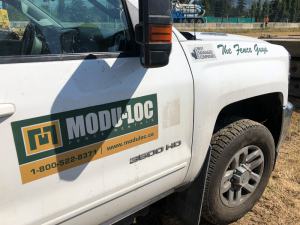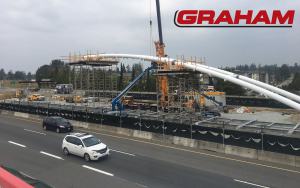For much of its 24-year history, Modu-Loc has been known as a fence rental company, but as of late, it has been striving to change how the construction industry views enclosure safety and compliance.
When ‘On Site with VRCA’ toured this VRCA member’s New Westminster office, I learned that changing attitudes toward safety are driving Modu-Loc to focus its efforts on venues with large-capacity containment needs, including heavy commercial construction sites and roadway construction zones.
Site safety has long been a top concern in construction, and recently, there has been mounting pressure on governing bodies to improve site safety standards, including perimeter fencing and containment. In the past decade, the increased focus on public safety, liability and insurance and security has led to stricter safety regulations for Canadian construction sites.
The new regulations set out minimum standards, however Modu-Loc believes there is still room for improvement. The company, which has been named one of Canada’s Best Managed Companies five years running, is working hard to develop a niche in the commercial construction industry on the belief they can be the new gold standard in containment and noise reduction.
Modu-Loc is carving this new niche by creating new products that either fill a need-gap or improving on other commonly used containment products.
Two such newly created products are the adjustable saddle and the stability bar developed by Modu-Loc’s vice-president of operational risk, Bill Matthews, and was specifically designed for increasing the safety of fencing on jersey barriers.
Jersey barriers are a modular concrete or plastic barrier used to separate lanes of traffic, reduce vehicle damage when hit, and most-importantly, stop cars from crossing over and causing head-on collisions. Jersey barriers are also used to contain commercial or residential jobsites, and in the above noted case, these jersey barriers usually need to be paired with a fence or screening product of sort for a jobsite.
Matthews recognized that the jersey barrier specs varied depending on the application and manufacturer, and as a result the saddles Modu-Loc had in stock were not always a perfect fit. This meant that fencing mounted on the barriers was not as secure or stable as required, forcing the company to regularly produce custom-designed saddles. Doing so was not always practical or possible due to time and budgetary constraints, so Matthews created this new jersey-saddle-stability bar system to accommodate almost any size of jersey barrier and provide a stronger, safer containment option, specifically within and around construction zones. Saving their customers time and money not having to wait on custom-designed saddles.
“With the old bars, when installed to spec, we would need two stability bars for every 10-foot long fence panels to ensure optimal stability,” said Jeff Block, Modu-Loc’s Western Canada sales manager. “The new stability bar achieves the same level of integrity with one bar per fence panel, reducing install costs while giving more options to our clients.”
It’s evident that Modu-Loc is very proud of its in-house creations. Another widely adopted design was the Sherman wheel – a venue holding-gate wheel named after its creator, Sherman Savage, Modu-Loc’s Vancouver operations manager.
Before the Sherman wheel, Modu-Loc offered two different types of gate wheels: a small caster wheel and an all-terrain wheel. The caster wheels worked great on smooth, level surfaces, but not on uneven terrain. Meanwhile the all-terrain wheels were bulky, a pain to transport, and difficult to assemble.
The Sherman Wheel replaced both those gate wheel types, maintaining the swiveling action of a caster wheel but was sized large enough to accommodate a wider range of terrain types.
And its not just Modu-Loc that sees the value of their own in-house creations – their products are in use at venues and construction sites throughout our own local neighborhoods, including the Salton Road Pedestrian/Cyclist Bridge under construction in Abbotsford. The project extends from Marshall Road to King Road and includes a pedestrian/cycle bridge over Highway 1.
The overpass, being constructed by long-time VRCA general contractor member, Graham, contracted Modu-Loc to provide general highway containment safety. Modu-Loc therefore installed its new adjustable saddle and stability bar system (see photos below) for Hwy-1 traffic security to limit any safety risk along the Highway near the Abbotsford overpass jobsite.
The safety negatives are plenty when construction takes place in close proximity to busy residential and commercial areas: temporary fencing toppling onto passersby, members of the public gaining unauthorized access to construction sites and scaling cranes, etc. but the positive results are the exterior of jobsites can serve as a touchpoint to the public. Educating the public that the construction companies care about personnel safety and the well-being of the neighbourhood. To this end, Modu-Loc believes the standards around temporary fencing should be improved and are therefore taking every step forward in the process to ensure safety success.
Thank you to all the staff at Modu-Loc for allowing me a closer look at your business operations. Your efforts to continually improve your products is a reminder construction and innovation are flourishing in the Lower Mainland.
A large thank you to Graham for allowing us on their site and for providing their renderings of the new Salton Pedestrian and cyclist overpass.
Also, a shout out to all the professionals and trades working on Abbotsford Salton Road Pedestrian/ Cycle Bridge: Associated Engineering; design work, All Span; temporary worked engineering, steel fabricator Marcon Metalfab Inc., Sterling Crane, and Protech Traffic Control.
To showcase your latest construction site or story with On Site with VRCA, contact us at [email protected].
